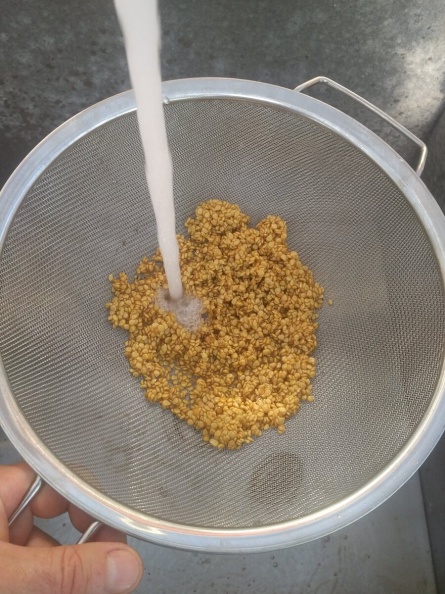Harvesting seeds from the garden is not the end of the seed saving process, because most seeds come along with fluffy, gristly chaff or gooey pulp - all the remnants of the flowers and fruit where the seeds grew.
A lot of the time you can get away without perfectly cleaning your seeds, especially if you're only saving a small amount for your own use. But if you want to offer seeds to others, they should be nicely-separated and free from remnants of other plant parts.
Additionally, pulp and chaff around your seeds can absorb moisture from the air, potentially resulting in mold issues for the seeds in storage. Moreover, your seeds will take up less space if they're sufficiently cleaned, which is one of the major issues facing home gardeners.
There are three main categories of seeds when it comes time to clean them:
- Seeds that grow in wet fruit
- Seeds that grow in pods
- Seeds that grow in fluffy or fragile seed heads
Wet-fruited Seeds - Use Water

Tomatoes, peppers, eggplants, and melons are some examples of seeds that ripen inside a wet fruit. Usually the seeds are ripe when the fruit is fully ripe (exception being cucumbers), and the fruit should ripen on the plant to maximize nutrition to the seeds.
Carefully slice the fruit open, and scoop out the seeds, rinse with water, and let the seeds dry fully before storing them.
This is simple for fruits such as peppers and cantaloupe melons, but trickier with some like tomatoes or squash. Every tomato seed is encased in a sac of jelly, which poses a few challenges: makes the seeds hard to handle, keeps the seeds dormant, and tends to absorb moisture even when the jelly dries out.
If you are only saving a few tomato seeds, you can rub off the jelly with your fingers or a cloth.
If you are saving many tomato seeds, it's easier to put them in a closed container at room temperature for 3 days, then rinse the rotten pulp through a sieve.
Read more about saving tomato seeds with our three-part series:
- How to Save Just a Few Tomato Seeds
- How to Save Lots of Tomato Seeds
- How to Save Even More Tomato Seeds
With squash, the secret to freeing the seeds from the stringy pulp is to scoop them into a bucket of water, and rub them with your fingers until the strings separate.
Podded Seeds - Use Air and/or Screens
Beans, peas, other legumes like chick peas, brassicas, and some garden flowers like larkspur grow in pods. The pods should always be allowed to mature to their dry, brown stage while on the plants to ensure the seeds are fed as much as possible.
It's okay to leave the seeds in the pods for a while, ever until the following spring, as long as they are open to the air to allow moisture to escape.
You can easily remove the seeds by breaking pods open with your fingers, and that's the best way if you're only saving a few seeds. For larger amounts, you'll find that method too time consuming. Instead, you can crush the pods in a large container so they shatter open and drop their seeds. You can use almost anything to smash them because the seeds will be quite durable so long as they are dry enough.
Then sift the empty pods off the top, and you'll find your seeds at the bottom of the container. A screen, or a light breeze from a fan, can help separate the dust and the last bits of broken pods.
Seed Heads - Use Air and/or Screens
Lettuce, most herbs, grains, and almost every garden flower grow their seeds in "heads" that turn brown when the seeds are ripe. You should let the seeds ripen fully on the plants. As the seed heads dry out, they often drop their seeds, which are now much more durable from the heads so you can just separate them by squeezing and rubbing.
The chaff is often difficult to separate from the seeds, and there is a lot of dust left behind. Start with the dust by sifting the seeds and chaff through a fine screen, small enough to keep the seeds but which allows the dust to float away.
Once the dust is gone, use an appropriately sized screen that allows the seeds to fall through but not the larger pieces of stem, leaves, and flower parts. Then, use a slightly smaller screen that will hold the seeds but allow the chaff and underdeveloped seeds to fall through.
A light breeze form a fan can help with this process, since the seeds are typically the most dense part of the heads. Gradually and carefully use the fan to blow the chaff away from the seeds, using your hands to sift through as needed. Patience is key here, or else the seeds may end up in the wind, too.
Learn more about saving seeds, and how to clean each species in our handbook "How to Save Your Own Seeds".
**
